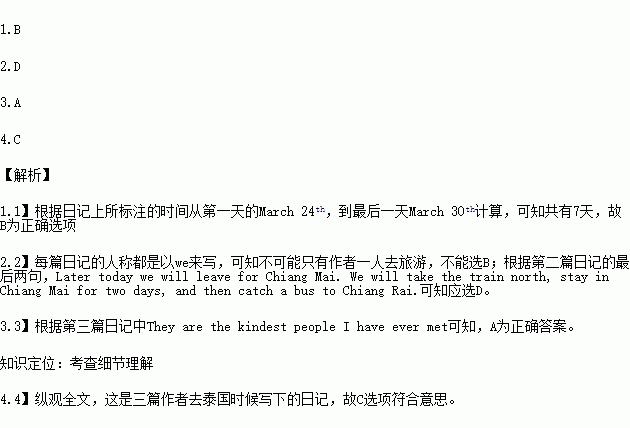题目内容
We have arrived in the hot, wet city of Bangkok.This is our first trip to Thailand(泰国).All the different smells make us want to try the food.We are going to eat something special for dinner tonight.The hotel we are staying in is cheap, and very clean.We plan to stay here for a few days, visit some places in the city, and then travel to Chiang Mai in the North.
Tuesday, March 27th
Bangkok is wonderful and surprising! The places are interesting.We visited the famous market which was on water, and saw a lot of fruits and vegetables.Everything is so colorful, and we have taken hundreds of photos already! Later today we will leave for Chiang Mai.We will take the train north, stay in Chiang Mai for two days, and then catch a bus to Chiang Rai.
Friday, March 30th
Our trip to Chiang Rai was long and boring.We visited a small village in the mountains.The village people here love the quiet life--no computers or phones.They are the kindest people I have ever met.They always smile and say “hello”.Kathy and I can only speak a few words of Thai, so smiling is the best way to show our kindness.I feel good here and hope to be able to come back next year.
1.The diaries above show the writer’s _____ days in Thailand.
A. 3
B. 7
C. 15
D. 30
2.Which of the following is TRUE?
A. Chiang Mai is a beautiful city in the south of Thailand.
B. The writer is traveling alone in Thailand.
C. Chiang Rai is a boring city in the mountains.
D. The writer left Chiang Mai for Chiang Rai by bus.
3.The people in the village _____.
A. are friendly to others
B. like to speak English
C. are very weak
D. hope to live in the cities
4.What is the best title for the whole diary?
A. My First Travel
B. The Outside World
C. Traveling in Thailand
D. A Country on the Train


